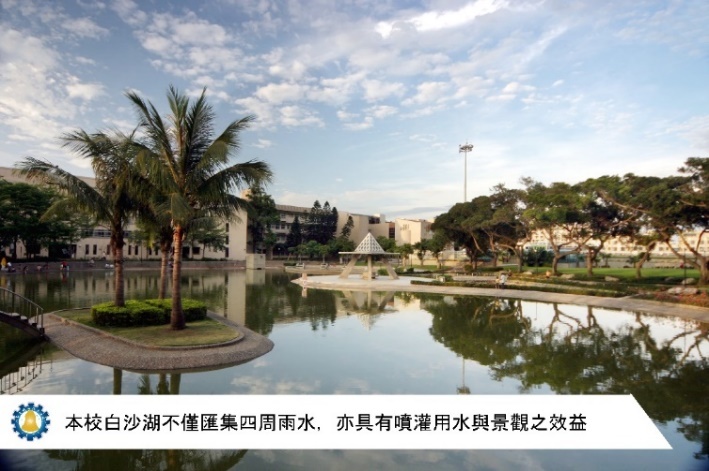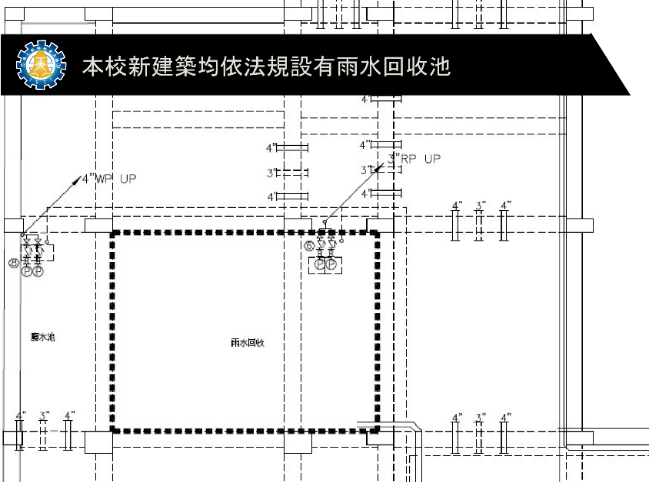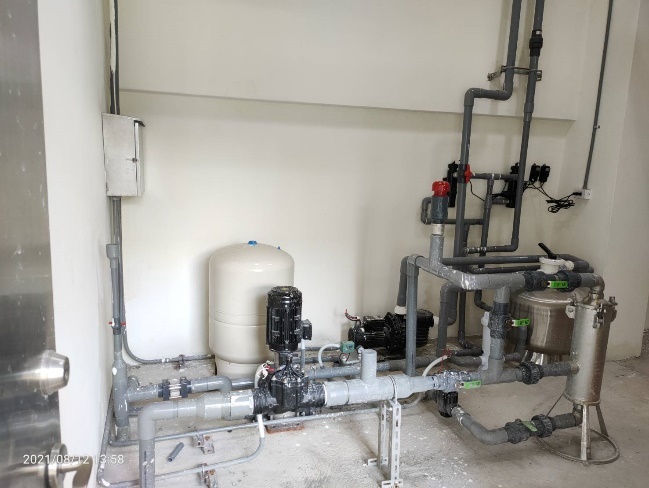SDG 6.4.2 Water reuse measurement
NCUE has an artificial lake called "Baisha Lake" with an area of approximately 9,000 m2. It serves as a retention pond during rainy weather, collecting rainwater and runoff from the surrounding buildings and green spaces. The collected rainwater is then utilized for irrigation of the lawns and gardens. (Figure 1)
|
|
|
Figure 1. Baisha Lake at NCUE’s Jinde Campus |
In addition, since 2003, all newly constructed buildings on campus have rainwater recovery ponds built in accordance with the requirements of the green buildings policy. The recovered rainwater is used for toilet flushing or the irrigation of landscape plants. The total capacity of the rainwater recovery ponds in the four main buildings is 400.5 m3, which saves a lot of tap water and raw water from the campus’ wells from being used as domestic or irrigation water each year, as shown in Table 1.
Table 1. Campus, building names, and rainwater recovery pond capacities
|
No. |
Campus |
Name of building |
Capacity of rainwater recovery tank |
|
1 |
Jinde |
Wang Jin-pyng Activity Centre |
35 m3 |
|
2 |
Jinde |
Main Teaching Building |
89.78 m3 |
|
3 |
Baoshan |
College of Engineering Building |
203 m3 |
|
4 |
Baoshan |
Student Dormitory No. 10 |
72.72 m3 |
|
5 |
Jinde |
College of Science Building (phase 1) |
23.4 m3 |
Since 2005, all buildings have been equipped with rainwater recovery ponds, in accordance with the regulation, as shown in Figures 2-3.
|
|
|
Figure 2. Rainwater recovery pond at 10th Dormitory at the Baoshan Campus |
|
|
|
Figure 3. Irrigation system at 10th Dormitory at the Baoshan Campus |
All buildings on campus have been retrofitted with water-saving appliances. These include new types of taps and water-saving faucets, water-saving and dual-stage flushing toilet bowls, water-saving shower heads, and sensing systems for automatic flushing. These reduce the consumption of domestic water by students and staff.



